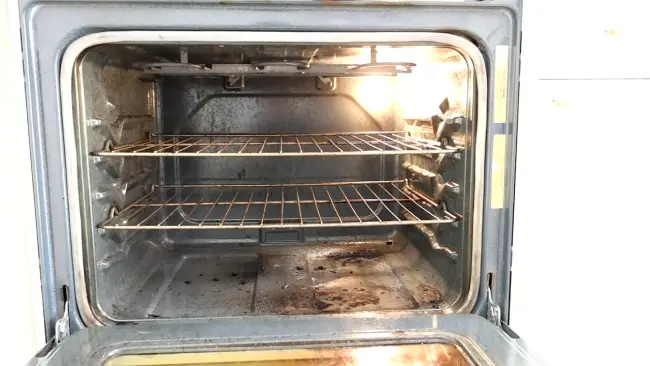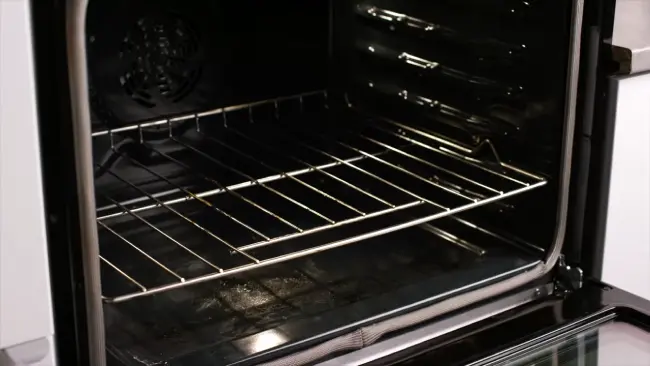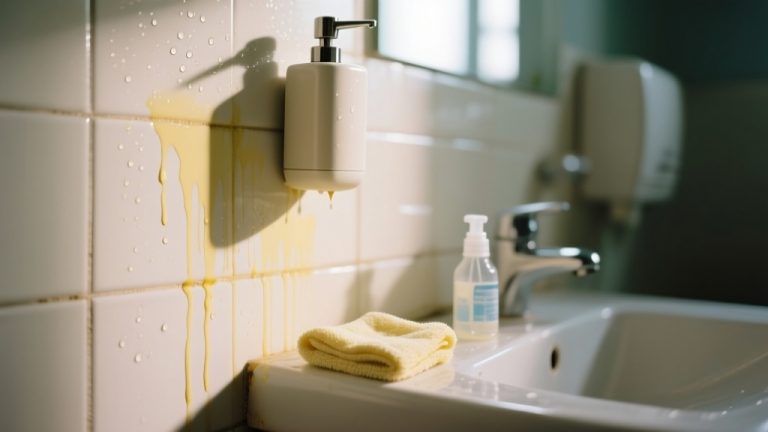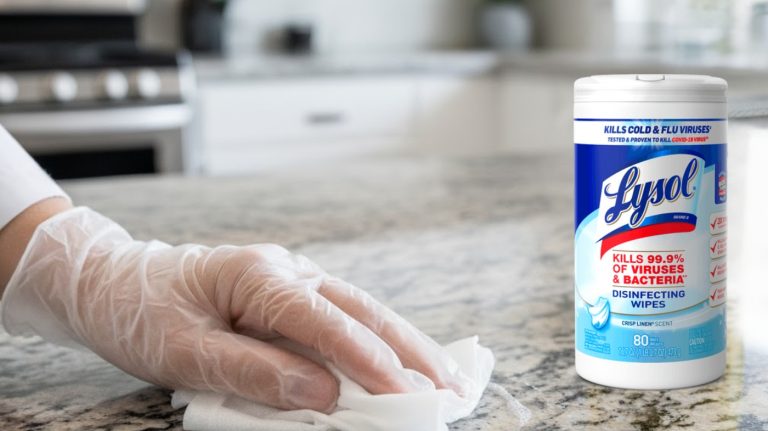How to Clean Oven After Fire Extinguisher: 8 Steps [DIY]
In the event of a cooking accident that requires the use of a fire extinguisher, it is essential to know how to clean the oven afterward. Although fire extinguishers can put out flames quickly, they often leave behind residue that can be difficult to clean.
No matter what kind of mess a fire extinguisher can make in your oven, don’t worry. You have the tools and the know-how to get it looking as good as new. Start by gathering up gloves, goggles, a mask or respirator (if you’re getting serious), baking soda, vinegar, dish soap and water.
Take out large chunks with some old towels before mixing up your cleaning solution. Pick either baking soda and water for tougher jobs or gentle soapy suds if that’s more efficient for you.
Gently scrub everything down, then clean off all those pesky little racks & trays too. Just remember to rinse well afterward & let air dry when complete.
Let’s check out our step-by-step guide on how to clean your oven after using an extinguisher. It’s the surefire way of keeping it hygienic for a long time.
How to Clean Oven After Fire Extinguisher: 8 Steps

Keeping your oven clean and hygienic after using a fire extinguisher is important. Here are some easy steps you can take to ensure it stays in top condition for years of delicious meals.
Step 1: Prepare Your Cleaning Tools and Supplies
Cleaning an oven after a fire extinguisher incident requires preparation and caution. Before starting the cleaning process, gather all the necessary tools and supplies to ensure you can clean your oven properly.
You will need gloves, goggles, a mask or respirator, a scraper or spatula, baking soda, vinegar, dish soap, water, and old towels.
Start by putting on protective gear, such as gloves, to prevent skin irritation while cleaning. Goggles are also essential when dealing with chemicals that may splash into your eyes during cleaning.
A mask or respirator is recommended since inhaling the chemical residue left behind in the oven may cause respiratory problems.
Step 2: Remove Large Chunks of Debris From the Oven
Before removing any large pieces, it is crucial to let the oven cool down completely. Attempting to clean while the oven is still hot could result in burns or damage to the appliance.
Once the oven has cooled, use gloves and a dustpan to gently scoop out as much debris as possible. If any stubborn pieces are left behind, try using a soft-bristled brush or a vacuum cleaner with a hose attachment.
Be careful not to scratch the oven’s interior during this process, as scratches can trap bacteria and cause future problems. It may take several attempts before all of the larger debris is successfully removed.
Step 3: Mix Your Cleaning Solution
To create your cleaning solution, you will need water and baking soda. Begin by combining ½ cup of baking soda with enough water to make a paste-like consistency. The mixture should not be too runny as it needs to adhere to the surfaces to clean them properly.
Once you have mixed your cleaning solution, apply it generously over all affected areas of the oven. Allow it to sit for several hours before scrubbing it away with a non-abrasive sponge or cloth.
Step 4: Gently Scrubbe the Inside of the Oven With a Sponge
After mixing your cleaning solution, the next step in removing fire extinguisher residue is gently sponging the inside. Using a soft sponge that won’t scratch or damage the oven’s surface is important.
After thoroughly scrubbing down all surfaces of the oven, rinse off any remaining cleaner with warm water and dry everything completely.
Once finished, it’s recommended that you run your oven at a high temperature for several minutes before cooking anything inside to ensure that all traces of chemical cleaner have been removed from its internal components.
Step 5: Clean the Oven Racks and Trays
To clean the oven trays and racks, remove all detachable parts from inside the oven. These include baking sheets, racks, and other accessories.
Soak them in hot water mixed with dish soap for about two hours or overnight if possible. Afterward, use a scrub brush or sponge to remove any remaining grime or residue on them thoroughly.
Secondly, focus on cleaning the interior of the oven itself using a mixture of baking soda and vinegar solution.
Apply this paste generously on areas affected by smoke damage from the fire extinguisher. Leave it there for about 15-20 minutes before wiping it off with a cloth soaked in warm water. Repeat this step until no traces of dirt remain visible.
Step 6: Rinsing the Oven With Clean Water
After cleaning the oven with baking soda and vinegar, it is important to rinse off any remaining residue. Rinsing the oven will ensure no harmful chemicals are left behind, which could potentially cause harm when cooking.
To do this, fill a clean bucket or spray bottle with warm water and begin rinsing the inside of the oven. Using a sponge or rag dipped in the warm water, wipe down all surfaces thoroughly until no visible residue is left on them.
Pay special attention to corners and crevices where fire extinguisher residue may have accumulated. Rinse out your sponge or rag frequently during this process to avoid spreading the residue around even further.
Step 7: Removing Excess Water and Soap Residue
Remove the water and soap residue from your oven after using the fire extinguisher. To begin with, start by wiping away as much water and foam as possible using paper towels or rags. Wear gloves while doing this task since some chemicals in fire retardants can irritate your hands.
Step 8: Drying the Oven and Its Components
After cleaning an oven exposed to a fire extinguisher, ensure you dry all its components thoroughly.
Begin by wiping down the oven’s interior with a clean cloth or paper towel. Remove any residual moisture on the oven’s walls and ceiling.
The door seal should also be dried as it can retain water, which may cause rusting or damage over time. To achieve this, use another clean and dry cloth to remove excess moisture between crevices.
Afterward, leave the oven’s door open for about 30 minutes to allow air circulation inside.
Ensuring that every oven component is completely dry before using it again is crucial. Failure to do so can lead to electrical short-circuiting or other forms of damage. Therefore, take extra care when drying each part of your oven after exposure to a fire extinguisher.
When You Need Professional Help Cleaning Your Oven After Using a Fire Extinguisher?

Although cleaning an oven can be done by oneself, there are instances where seeking professional assistance should be taken with seriousness. If the damage caused by the fire was extensive and affected multiple areas of the kitchen or home, it is recommended to seek professional help.
Professionals have experience with restoration and will ensure that all affected areas are thoroughly cleaned and restored to their original state.
Also, if the fire had toxic fumes or chemicals involved, a hazmat team must handle the cleanup process due to safety concerns. These professionals have proper equipment and training to safely dispose of hazardous materials without causing harm to themselves or others.
Guidelines For Preventing Kitchen Fires and Extinguisher Use
Keeping your kitchen safe from fire is a must. Remember these guidelines to help prevent fires and teach you how to use an extinguisher correctly.
Keep Flammables Away
To prevent kitchen fires and the need for fire extinguishers, it is important to keep flammables away from potential heat sources.
Flammable materials such as paper towels, oven mitts, and dishcloths should be kept at a safe distance from stove tops or ovens that are in use. This will reduce the risk of these items accidentally catching on fire.
It is also crucial to store any chemicals safely and separately from cooking areas. Cleaning solutions, oil containers, and aerosol cans can pose a significant threat if they come into contact with flames or high temperatures.
Also, it is essential to keep children away from stove tops while cooking since their curiosity may lead them to play with flammable objects.
Always wear appropriate protective gear like oven mitts or aprons when working with open flames or hot surfaces. These tools protect your skin and serve as an added barrier between you and any flammable objects nearby.
Ventilate Kitchen
Another crucial step in preventing kitchen fires is ensuring proper ventilation. Proper ventilation helps remove excess smoke, grease, and heat from cooking that can potentially ignite a fire if left unchecked.
One way to promote good airflow in your kitchen is by opening windows or using exhaust fans while cooking. This will help prevent any buildup of steam or smoke that could trigger an accidental fire.
Also, it is important to regularly clean and maintain exhaust hoods to keep them functioning properly. When frying foods, be sure not to overcrowd the pan, as this can cause excessive splattering and lead to dangerous flare-ups.
It’s also essential to pay attention while cooking and never leave food unattended on the stove since even a small flame can quickly escalate into a full-blown kitchen fire without warning.
Fire Safety Measures In the Kitchen
In case of an oven fire, using a fire extinguisher might be necessary to prevent further damage. While using a fire extinguisher on an oven may help put out the flames, it can also leave behind residue that must be cleaned immediately.
The chemicals in these extinguishers effectively suppress fires but can cause harm when ingested or left uncleaned. Remove any excess foam with a damp cloth to get rid of the fire extinguisher residue.
Once you’ve cleared away any remaining debris from the affected area, consider running your oven’s self-cleaning cycle. This setting heats up the inside of your oven to extreme temperatures, effectively burning off any remaining residue from the extinguisher.
Remember that prevention is always better than cure. Make sure to follow best practices for cooking and cleaning your oven regularly to minimize the risk of future incidents.
How long should you let your oven sit after cleaning the fire extinguisher residue?

After cleaning the fire extinguisher residue from your oven, it is crucial to allow adequate time for the oven to dry completely before using it again.
The duration required to dry the oven may vary depending on the fire extinguisher type used and the fire’s magnitude. Leaving the oven to dry naturally for at least 2-3 hours is recommended.
This time frame allows the oven to air out and the cleaning solution evaporates efficiently. Leaving the oven overnight might be necessary to ensure that it is entirely dry before use.
Can you use isopropyl alcohol to clean your oven after you use a fire extinguisher?
Isopropyl alcohol can be used to clean the oven after you use the fire extinguisher. But it’s crucial to exercise caution and use it correctly. Before spraying, vacuum or sweep up any loose debris and then mix the isopropyl with warm water at a 50-50 ratio.
Spray this solution on the stuck-on residue, and let it sit for several minutes, making wiping away what’s left much easier. Make sure you put on all of your protective gear.
Gloves are an absolute must, and get rid of every bit of residue before firing up that oven again. Otherwise, accidents could happen if something lurks inside those hard-to-see corners.
Keep Your Kitchen Safe After a Fire: Restore Oven to Former Glory With A Little Effort
After experiencing a fire in your oven and using an extinguisher to put it out, cleaning the aftermath can seem like a daunting task. But, with proper preparation and supplies, cleaning up after a kitchen fire is manageable.
Begin by removing large debris from the oven before mixing a baking soda and water cleaning solution. Gently scrub all interior surfaces of the oven before tackling the racks and trays.
It is important to check for any remaining residue or damage and seek professional help if necessary.
Preventing future fires includes practicing proper cooking techniques, avoiding leaving food unattended, keeping flammable materials away from heat sources, regularly maintaining appliances, and having working smoke detectors in place.
By following these tips, you can maintain safety measures in your kitchen and reduce the chances of another fire occurring.







